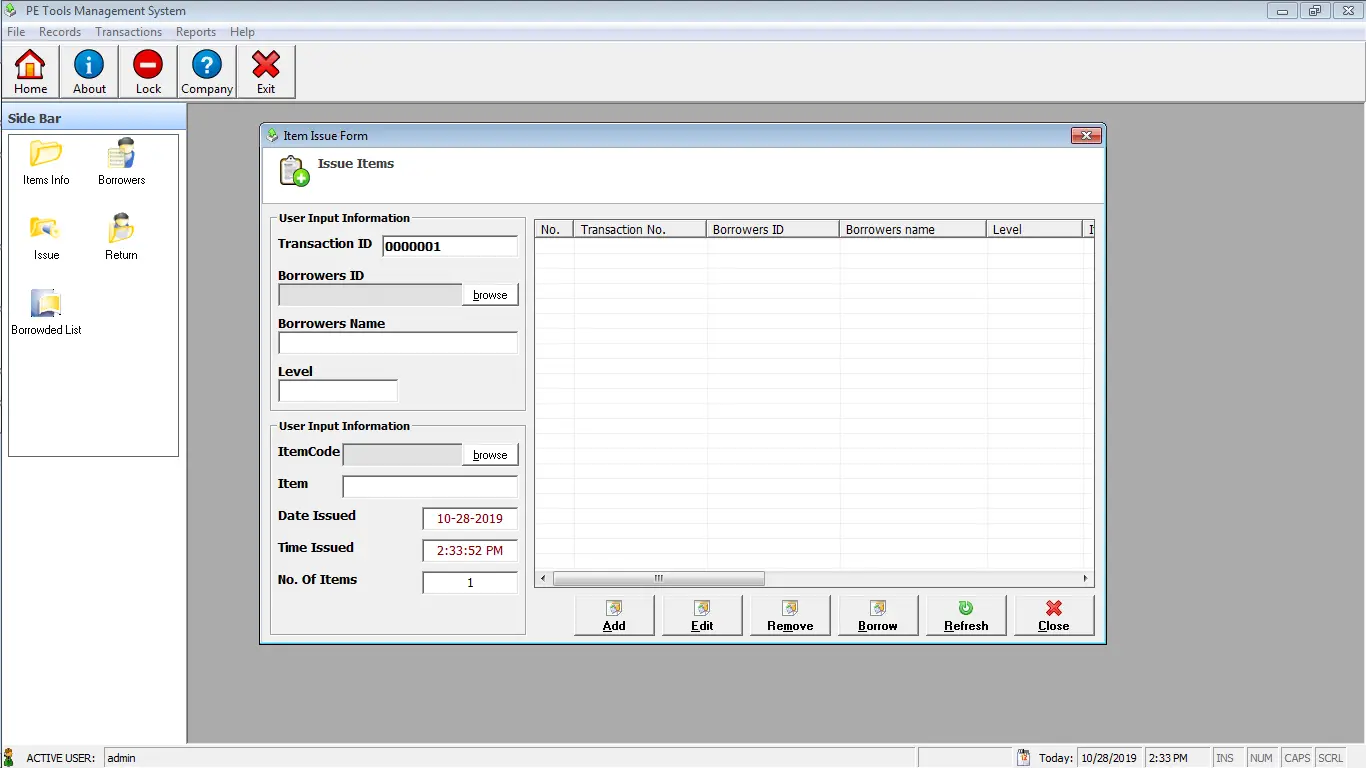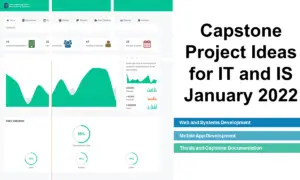Rice Farm Information Management with Yield Prediction
Introduction
Table of Contents
Throughout history, agriculture has been the cornerstone of human civilization, providing sustenance and shaping societies. However, with a growing global population and a dynamic climate, the need to optimize food production has become paramount. This is where agricultural technology (agritech) emerges as a game-changer, offering a powerful fusion of data and innovation to empower farmers.
This project ventures into the exciting world of agritech by building a rice information system with yield prediction capabilities. This system will be a valuable asset for rice farmers, allowing them to not only collect and analyze data related to their crops, but also gain crucial insights into their potential harvest.
To build this rice information system, we will utilize the combined strengths of PHP and MySQL. PHP, a versatile programming language, will be the engine for constructing the user interface and integrating the logic behind data processing. MySQL, a robust database management system, will serve as the backbone for storing and managing all the data pertaining to rice fields, management practices employed, and ultimately, the predicted yields.
Through the synergy of these technologies, we aim to create a user-friendly system that empowers rice farmers to make informed decisions throughout the growing season, ultimately leading to greater agricultural success.
Overview of PHP and MySQL
PHP, which stands for Hypertext Preprocessor, is a widely-used open-source server-side scripting language designed primarily for web development. Created in 1994 by Rasmus Lerdorf, PHP has since become one of the most popular languages for building dynamic and interactive websites. Its ease of integration with HTML, simplicity, and flexibility make it a preferred choice for web developers.
PHP plays a crucial role in web development by enabling the creation of dynamic content that interacts with databases and responds to user input. It allows developers to build complex functionalities, such as form handling, session management, and user authentication, with relatively straightforward syntax. Additionally, PHP’s vast ecosystem of frameworks (like Laravel, Symfony, and CodeIgniter) and libraries further streamline the development process, offering pre-built modules for common tasks.
The Benefits of Using MySQL as a Database Management System
MySQL is a powerful, open-source relational database management system (RDBMS) that provides a reliable and efficient way to store, manage, and retrieve data. Developed by MySQL AB (now owned by Oracle Corporation), it has become a cornerstone in the web development world, especially when paired with PHP.
Key benefits of using MySQL include:
- Scalability: MySQL can handle large databases with millions of records, making it suitable for both small and large applications.
- Performance: Optimized for speed, MySQL supports fast query processing and indexing, ensuring quick data retrieval and manipulation.
- Security: MySQL offers robust security features, including user authentication, access control, and encryption, helping to protect sensitive data.
- Ease of Use: MySQL’s straightforward syntax and extensive documentation make it accessible to both beginners and experienced developers.
- Community and Support: Being open-source, MySQL has a vast and active community that contributes to its continuous improvement and provides ample support through forums, tutorials, and documentation.
- Integration: MySQL seamlessly integrates with various programming languages and platforms, making it a versatile choice for diverse development environments.
Popularity and Widespread Use of PHP and MySQL in Building Web Applications
PHP and MySQL have stood the test of time as a dynamic duo in the web development landscape. Their widespread adoption is evident in the numerous websites and web applications built using these technologies, including some of the world’s most popular platforms like WordPress, Facebook (in its early days), and Wikipedia.
The combination of PHP and MySQL offers a powerful and cost-effective solution for developers looking to create robust, scalable, and interactive web applications. Their popularity can be attributed to:
- Cost-Effectiveness: Both PHP and MySQL are open-source and free to use, significantly reducing the cost of development and deployment.
- Extensive Documentation: Comprehensive documentation, tutorials, and community resources make it easy for developers to learn and troubleshoot.
- Framework Support: Numerous frameworks and content management systems (CMS) built on PHP and MySQL speed up development and enhance functionality.
- Cross-Platform Compatibility: PHP and MySQL can run on various operating systems, including Windows, Linux, and macOS, providing flexibility in deployment.
System functionalities
A critical component of our rice information system is the robust collection of data, which forms the foundation for accurate yield predictions and insightful analytics. The system will collect various types of data from the users, including details about rice fields, management practices, and optionally, weather data. Here’s a detailed breakdown:
Rice Field Details
- Location: The geographical location of the rice field, typically captured through coordinates or region names. This data is crucial for associating environmental conditions with specific fields.
- Size: The size of the rice field in hectares or acres, which helps in understanding the scale of operations and resource allocation.
- Variety: The specific variety of rice being cultivated, as different varieties may have different growth characteristics and yield potential.
Management Practices
- Planting Date: The date when the rice was planted, which is essential for tracking the growth stages and estimating harvest times.
- Fertilizer Application: Details of fertilizer application, including types of fertilizers used, application dates, and quantities. This information helps in understanding the impact of nutrient management on crop growth and yield.
Weather Data Integration (Optional)
- Weather Data: Integrating weather data such as temperature, rainfall, humidity, and sunshine hours can significantly enhance yield prediction accuracy. This data can be sourced from local weather stations or online weather services via APIs. By correlating weather patterns with crop performance, the system can provide more precise yield forecasts.
Yield Prediction
Yield prediction is a core functionality of the system, aiming to provide farmers with actionable insights to optimize their farming practices. There are various techniques for yield prediction, broadly categorized into statistical models and machine learning algorithms.
Statistical Models
- Regression Analysis: One of the simplest and most widely used statistical techniques for yield prediction. It involves identifying relationships between yield and various predictor variables (e.g., weather conditions, soil properties, and management practices). Linear regression is a common method, but more complex models like multiple regression or polynomial regression can also be used.
Machine Learning Algorithms
- Overview of Machine Learning in Agriculture: Machine learning (ML) offers more sophisticated and accurate yield prediction methods by learning from historical data and identifying complex patterns. Some commonly used ML algorithms for yield prediction include:
- Decision Trees: These models split the data into subsets based on the value of input features, making predictions based on the conditions met at each node.
- Random Forests: An ensemble method that combines multiple decision trees to improve prediction accuracy and reduce overfitting.
- Support Vector Machines (SVM): A powerful classification and regression technique that finds the optimal hyperplane to separate data points in a high-dimensional space.
- Neural Networks: Deep learning models that can capture intricate patterns in large datasets, making them suitable for complex yield prediction tasks.
Implementing these techniques involves collecting and preprocessing the data, training the models, and evaluating their performance to ensure accurate and reliable predictions.
Data Visualization
Data visualization is a crucial aspect of the system, enabling users to interpret and analyze the collected data and predicted yields effectively. Visualization tools can transform raw data into meaningful insights through interactive charts and graphs.
Visualizing Collected Data
- Field Data Visualization: Maps and scatter plots to show the geographical distribution of fields, sizes, and varieties.
- Management Practices: Timeline charts to display planting dates, fertilizer application schedules, and other management activities.
Visualizing Predicted Yields
- Yield Forecast Charts: Line graphs and bar charts to illustrate predicted yields over time or across different fields and varieties.
- Comparison Graphs: Visual comparisons of actual vs. predicted yields, helping users to evaluate the accuracy of predictions and identify any discrepancies.
Implementing Yield Prediction
Yield prediction is a crucial component of the rice information system, as it enables users to make informed decisions based on accurate projections of crop yield. In this section, we will discuss different approaches and models for rice yield prediction, explore how to integrate the prediction model into the rice information system, and provide code examples and guidelines for training the prediction model. Approaches and Models for Rice Yield Prediction:
- There are various approaches and models for rice yield prediction, with statistical models and machine learning algorithms being the most commonly used.
- Statistical models analyze historical data and identify patterns and relationships between factors such as weather conditions, management practices, and yield.
- Machine learning algorithms, on the other hand, can learn complex relationships and patterns from large datasets to make accurate predictions.
- Common machine learning algorithms used for yield prediction include Artificial Neural Networks (ANN), Support Vector Machines (SVM), and Random Forests.
- These algorithms can be trained on historical data to learn the relationships between input variables (such as weather data, management practices) and yield, and then used to make predictions on new data.
Integrating the Prediction Model into the Rice Information System:
- To integrate the prediction model into the rice information system, the system needs to be equipped with the necessary infrastructure to train and utilize the model.
- The system should provide functionality to input historical data, including weather conditions, management practices, and corresponding yield.
- Once the data is collected, it can be preprocessed and used to train the prediction model using the chosen algorithm.
- The trained model can be stored and utilized within the system to make predictions based on input variables provided by the user.
- The system should facilitate the seamless integration of the prediction model, allowing users to input variables and obtain predicted yields in real-time.
By implementing the yield prediction functionality, the rice information system can provide users with valuable insights into future crop yields. This empowers farmers, researchers, and policymakers to make informed decisions regarding resource allocation, crop management, and food security.
Conclusion
In this blog post, we’ve explored the exciting potential of a rice information system equipped with yield prediction capabilities. By leveraging the power of PHP and MySQL, we can create a valuable tool for rice farmers, allowing them to collect and analyze data, and most importantly, gain insights into their potential harvest.
Reaping the Rewards of Data-Driven Decisions
The benefits of implementing such a system are manifold:
- Informed Decision Making: With access to data and yield predictions, farmers can make informed choices regarding resource allocation, irrigation practices, and pest management, potentially optimizing yield and profitability.
- Improved Resource Management: The system can help farmers optimize resource utilization, such as fertilizer application, leading to cost savings and a more sustainable farming approach.
- Enhanced Risk Management: By understanding potential yield impacts from weather patterns, farmers can proactively implement strategies to mitigate risks and ensure a successful harvest.
Looking to the Future: Expanding the System’s Potential
The possibilities for this rice information system extend beyond its core functionalities. Here are some exciting future enhancements to consider:
- Mobile Application: Developing a mobile application would allow farmers to access and manage their data on the go, further enhancing user convenience.
- Integration with Other Agritech Systems: Expanding the system’s reach by integrating it with weather monitoring stations, market data platforms, or other agricultural tools can provide farmers with a holistic view of their operations and market conditions.
As technology continues to evolve, the potential of agritech solutions like this rice information system will only grow. By empowering farmers with data-driven insights, we can collectively cultivate a brighter future for rice production, ensuring food security for generations to come.
We encourage you to explore the world of agritech and discover how technology can empower those who nourish the world. Feel free to share your thoughts and ideas for further enhancing this rice information system in the comments below!
Readers are also interested in:
- Java Source code for Beginners
- 30 Best Web Development Project Ideas
- 50 Best Django Project Ideas
- Best Game Python Project Ideas
You may visit our Facebook page for more information, inquiries, and comments. Please subscribe also to our YouTube Channel to receive free capstone projects resources and computer programming tutorials.
Hire our team to do the project.


